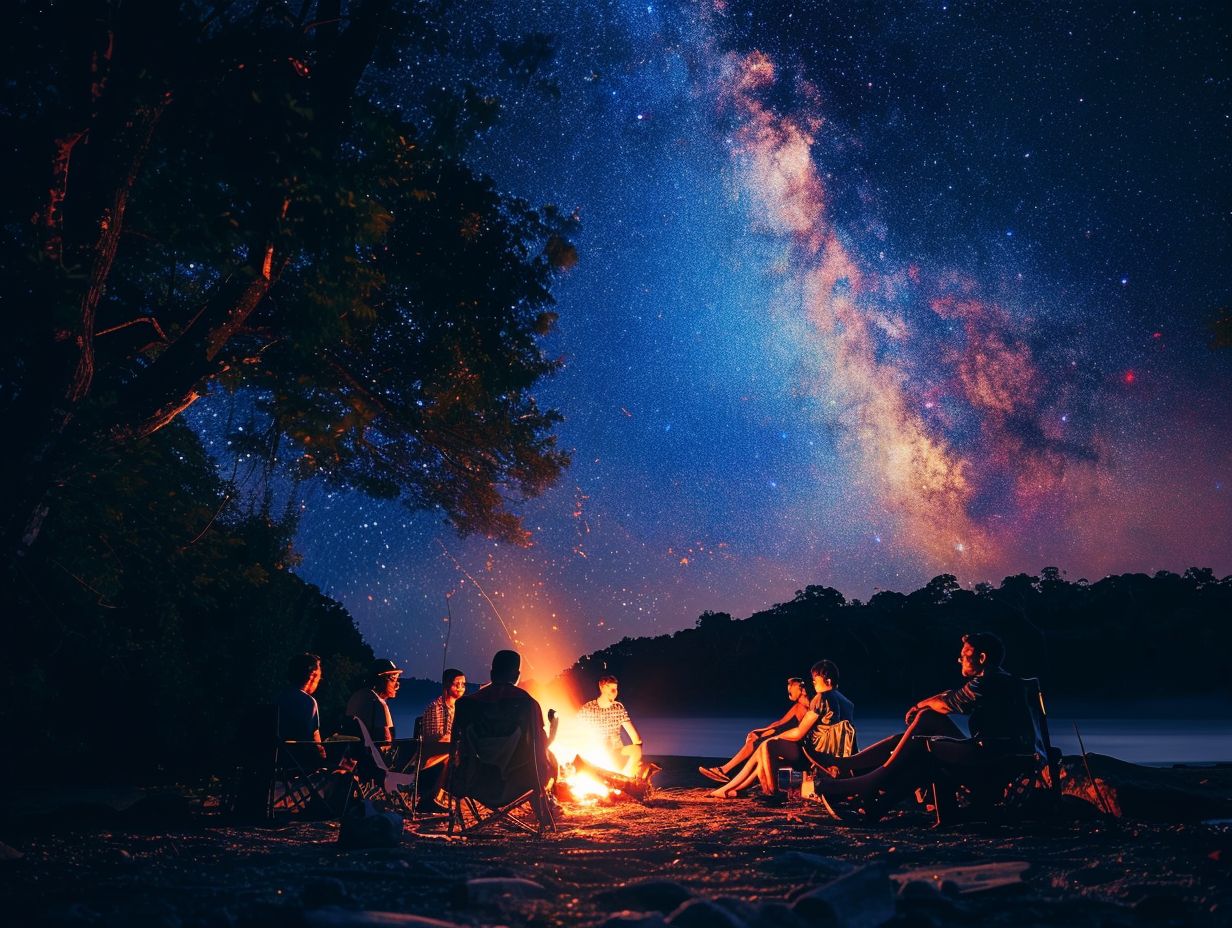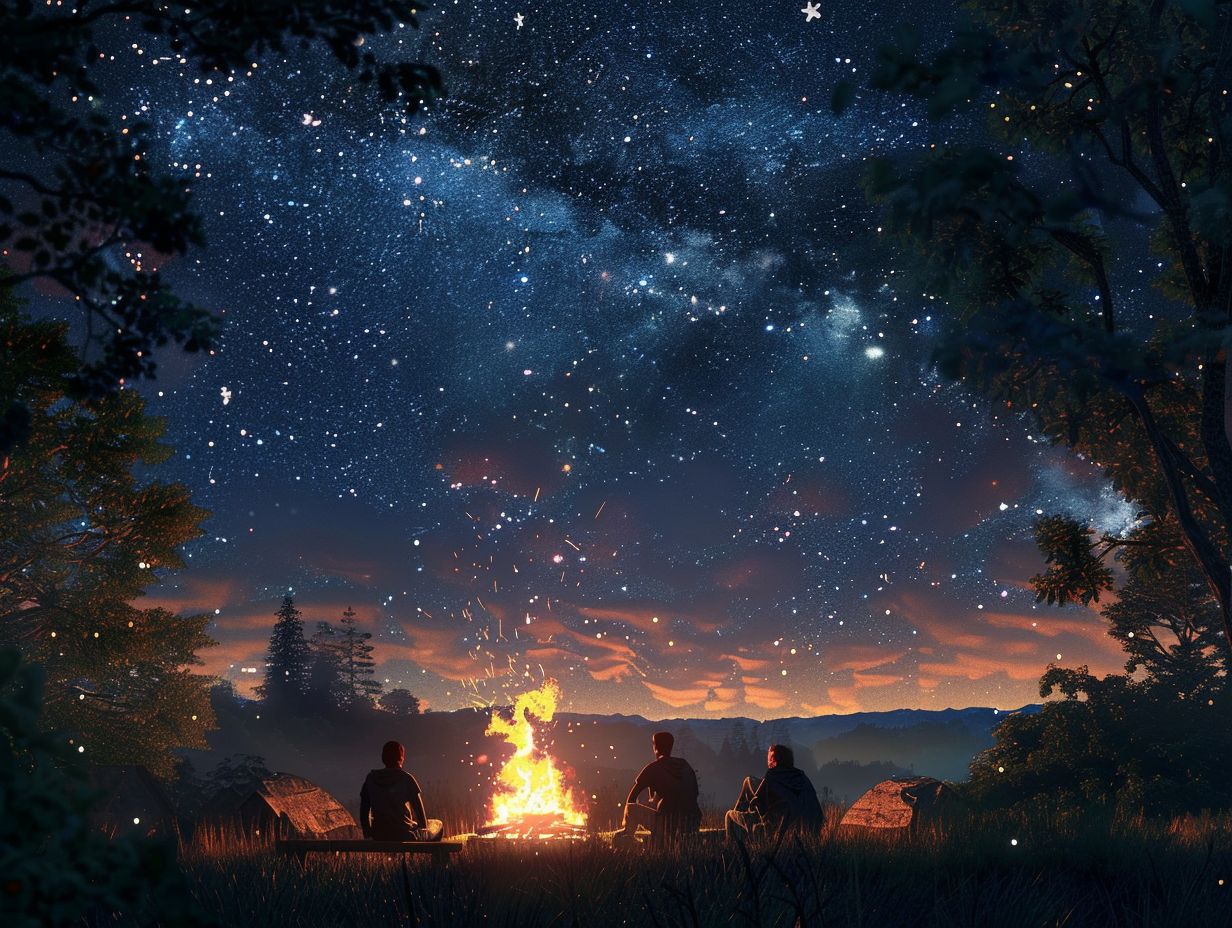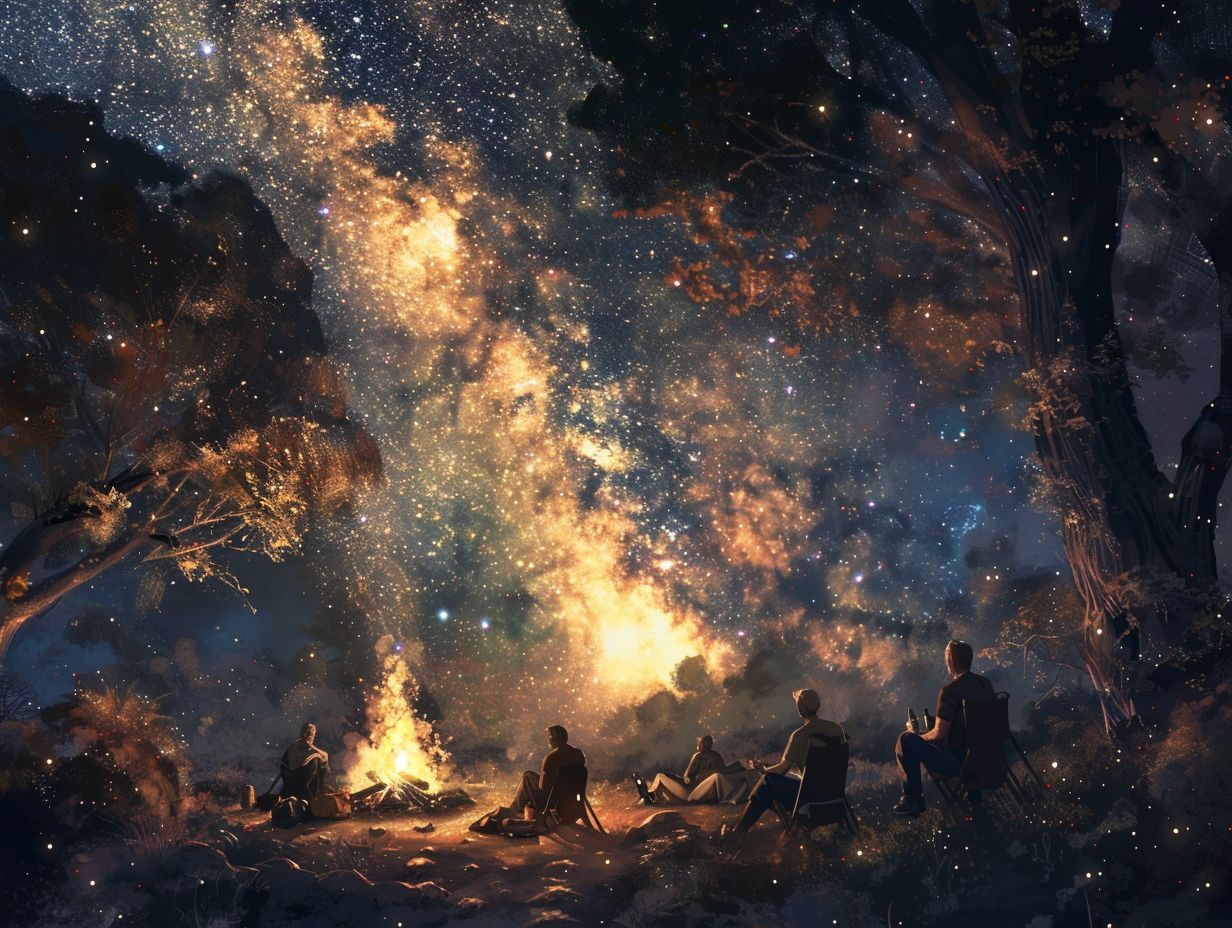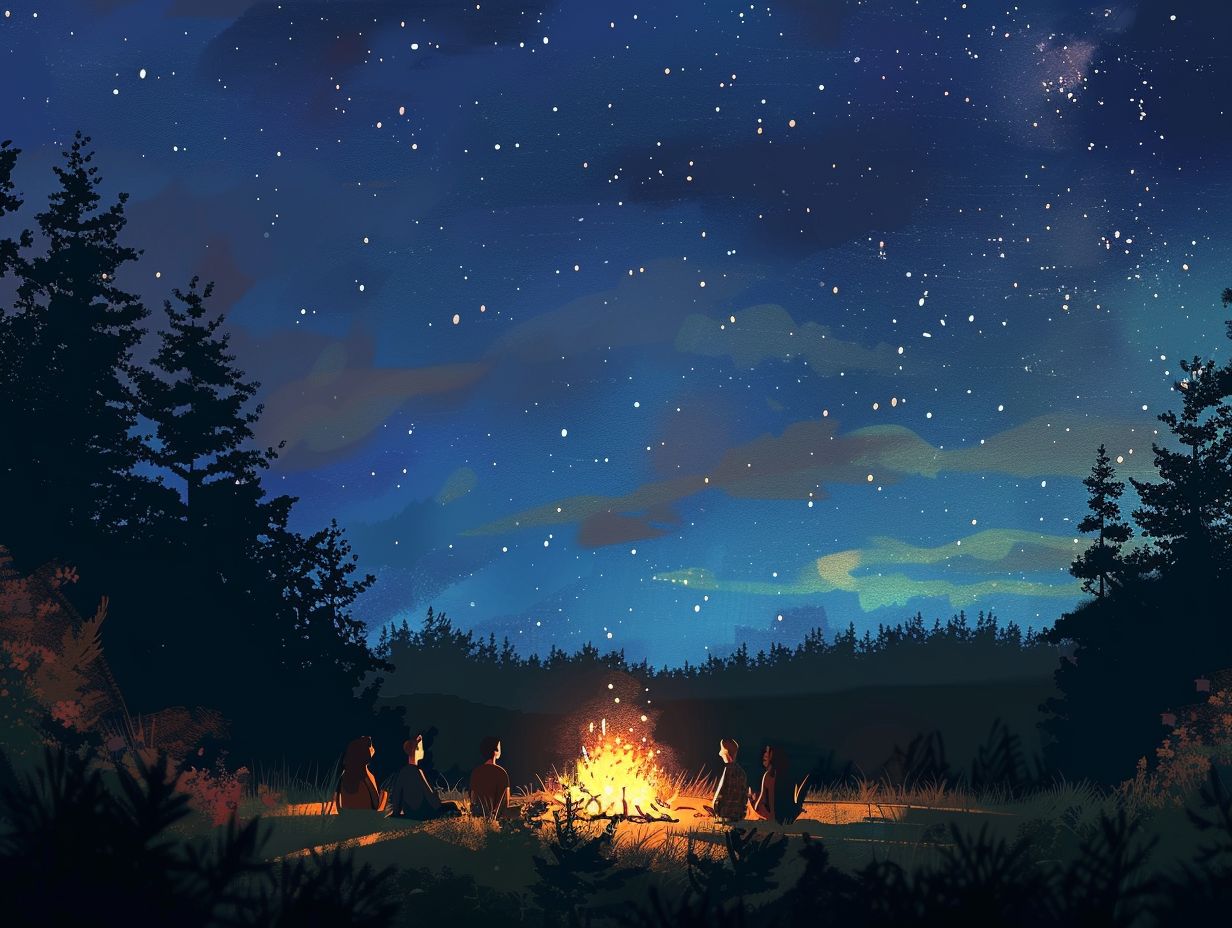If you are a nature enthusiast seeking the ultimate wildlife viewing experience, your search ends here. The top wildlife viewing campsites are highlighted, complete with their locations and distinctive features.
Learn about the best times to visit for optimal wildlife viewing, as seasonal patterns and migration are explored. Valuable tips on essential gear and supplies to bring for a successful trip are provided.
Ensure you do not overlook additional activities and attractions in the area, as other things to do and see during your wildlife adventure are uncovered. Prepare yourself for an unforgettable experience in the great outdoors!
Key Takeaways:

- Immerse yourself in nature and prepare for a wild adventure at these top campsites for viewing wildlife.
- Visit during the optimal times for wildlife viewing, such as seasonal patterns and migrations, to increase your chances of spotting your favorite animals.
- Make sure to pack essential gear and supplies for a successful trip, and don’t forget to check out other activities and attractions in the area for a well-rounded experience.
Top Wildlife Viewing Campsites
Explore some of the top wildlife viewing campsites that offer unrivalled opportunities for observing majestic animals in their natural habitats. These campsites provide a unique combination of basic pitches and comfortable facilities suitable for campers of all levels.
When you visit these campsites, you will have the chance to hear the eerie howls of wolves echoing through the woodlands and witness a family of bears scavenging for food. These experiences are just a glimpse of the excitement that awaits you at these locations.
Situated in varied ecosystems, these campsites provide a front-row seat to nature’s spectacle, whether it’s observing elephants roaming freely in savannahs or listening to the melodious songs of exotic birds.
Skilled guides at these campsites offer valuable insights about the wildlife, enhancing your camping experience by providing knowledge and understanding of the delicate balance of nature.
Location and Features of Each Site
Each wildlife viewing campsite is strategically located to maximise wildlife opportunities and immerse you in the beauty of nature. The features of these sites vary, offering diverse habitats for various animals and ensuring a memorable camping experience.
Some campsites are situated near watering holes, attracting elephants, zebras, and giraffes that come for a drink. Others border lush forests where you may spot elusive leopards or hear the echoing calls of monkeys.
Facilities range from basic tent sites to luxury lodges, each providing a unique setting to connect with the surrounding wilderness. Campfires under starlit skies create a magical ambiance, allowing you to bond with fellow nature enthusiasts and share stories of wildlife encounters.
Best Times to Visit for Optimal Wildlife Viewing

Understanding the seasonal patterns and migration of animals is crucial for determining the best times to visit wildlife viewing campsites. Different seasons offer unique opportunities to witness diverse wildlife behaviours and interactions with their natural surroundings.
During the dry season, when water sources are scarce, animals tend to gather around remaining waterholes, providing excellent viewing opportunities. In contrast, the wet season brings lush vegetation, making it harder to spot wildlife but enhancing chances of seeing migratory birds and newborn animals.
Understanding these seasonal variations allows visitors to plan their trips accordingly, maximising the likelihood of captivating wildlife encounters. By aligning your visit with these behavioural patterns, you can immerse yourself in the natural rhythm of the animal kingdom and witness remarkable scenes of survival and adaptation.
Seasonal Patterns and Migration
Seasonal patterns and migration play a significant role in your wildlife viewing experience, influencing the presence of various animals, their behaviors, and the sounds of nature that echo through the camp sites. Understanding these patterns can enhance your overall wildlife encounters during your camping trip.
For instance, during the spring migration, you may notice the air filled with birdsong as migratory birds return to their breeding grounds, creating a symphony of chirrups and calls. In the summer, the buzz of insects becomes more prominent, along with the rustling of leaves as small mammals become more active.
During autumn, you’ll experience the haunting calls of red deer during their mating season, while winter signals a quieter period with occasional howls of wolves that pierce through the crisp, cold air.
What to Bring for a Successful Trip
Ensuring a successful wildlife viewing camping trip hinges on packing the right essentials. From essential gear to camping supplies, having the appropriate equipment can enhance your experience in the wilderness and ensure your stay is both comfortable and memorable.
Beginning with camping essentials, a durable tent that offers adequate shelter is essential. A sleeping bag suitable for the climate, a reliable camping stove for meal preparation, and a high-quality cooler for storing perishables are all vital items.
To prioritize safety, it is essential to pack a first aid kit, a torch or headlamp, and bear-resistant food storage containers. Additionally, recommended items for tent camping include a camping chair for relaxation, binoculars for wildlife observation, and a field guide to help identify local flora and fauna.
Essential Gear and Supplies
When preparing for wildlife viewing camping, it is crucial to select the appropriate gear and supplies to ensure a comfortable and secure experience.
Equipping yourself with essential items, ranging from camping tents to distance-viewing equipment, can elevate your camping excursion amidst the serene sounds of wildlife.
A high-quality tent is a necessity for providing shelter and protection from the elements while in the wilderness. Along with a resilient tent, dependable sleeping bags and sleeping mats are essential for ensuring a restful night’s sleep. Important camping tools such as a multi-tool, torch, and portable cooker are useful for a variety of tasks.
Binoculars or a spotting scope are essential tools for observing wildlife from a distance, while a field guide can assist in identifying different species you encounter. Including safety equipment like a first aid kit and emergency whistle in your packing list is always prudent.
Additional Activities and Attractions

Along with wildlife viewing, many wildlife viewing campsites offer various activities and attractions that allow you to explore the surrounding nature and wildlife opportunities. These activities are designed to enhance your camping experience and cater to nature enthusiasts.
One popular attraction at these campsites is guided nature walks. Knowledgeable guides will lead you through the wilderness, pointing out unique plant species, animal tracks, and sharing interesting facts about the ecosystem.
For a more immersive experience, some campsites provide wildlife photography workshops. This allows you to capture stunning images of the local wildlife in their natural habitat.
Birdwatching excursions are also quite popular among campers, offering opportunities to spot rare and migratory bird species.
To add a magical touch to your camping adventure, campfire storytelling sessions and stargazing nights under the open sky are available at some campsites. These activities contribute to a well-rounded and enriching experience for nature enthusiasts.
Other Things to Do and See in the Area
When exploring the area around wildlife viewing campsites, you will discover a variety of activities and sights that extend beyond wildlife encounters.
Along with the wildlife opportunities available at these campgrounds, there are scenic nature trails and educational programmes to enjoy.
Embark on guided nature walks led by experienced naturalists to delve into the intricate ecosystems and diverse flora and fauna of the surrounding area.
Interactive wildlife-related programmes and workshops are also available for those seeking a hands-on experience, providing valuable insight into conservation efforts and animal behaviour.
Participate in informative talks and discussions about wildlife conservation, sustainability, and environmental stewardship to enhance your camping experience with knowledge and awareness. These activities complement the wildlife viewing opportunities and offer a well-rounded experience for visitors at wildlife viewing campsites.
Frequently Asked Questions
What are the best campsites for viewing wildlife?
The best campsites for viewing wildlife are those that are located in or near natural habitats with diverse and abundant wildlife populations. Some examples include national parks, game reserves, and campgrounds with designated wildlife viewing areas.
What types of wildlife can I expect to see at these campsites?

The types of wildlife you can expect to see at these campsites vary depending on the location. However, some common wildlife sightings include birds, deer, elk, bears, and other small mammals. Some campsites may also have opportunities to see larger animals like moose, bison, and even wolves.
Do I need any special equipment for viewing wildlife at these campsites?
In most cases, no special equipment is required for viewing wildlife at these campsites. However, it is always a good idea to bring binoculars for a closer look and a camera to capture any sightings. You may also want to bring a field guide or use a wildlife identification app to help you identify the animals you see.
Are these campsites safe for viewing wildlife?
Yes, these campsites are typically safe for viewing wildlife. However, it is important to always follow safety guidelines and keep a safe distance from any animals you encounter. Do not approach or disturb the animals, and always be aware of your surroundings.
When is the best time to visit these campsites for viewing wildlife?
The best time to visit these campsites for viewing wildlife is typically during the early morning or late afternoon when animals are most active. However, wildlife sightings can occur at any time of day, so it is always a good idea to keep your eyes open and be patient.
Do I need a permit or special permission to camp at these campsites?
It depends on the specific campsite. Some may require a permit for camping, while others may have specific rules and regulations for viewing wildlife. It is always best to check with the campsite or park authorities before your visit to ensure you are following all necessary guidelines.



